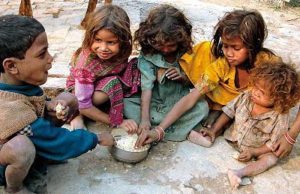
In our college days we read poverty which is mainly based on income criterion i.e. people are getting minimum calorie or not by consuming food items. But presently concept has been changed, now it is the Global Multidimensional Poverty Index (MPI) which examines each person’s deprivations across 10 indicators in three equally weighted dimensions—health, education and standard of living and offers to identify both who is poor and how they are poor. It complements the international $1.90 a day poverty rate by showing the nature and extent of overlapping deprivations for each person. Of the ten indicators, nutrition and child mortality are the two indicators under
Health, years of schooling and school attendance are two indicators under Education and cooking fuel, sanitation, drinking water, electricity, housing and assets are six indicators under Standard of Living. A few important points as observed from the UNDP Report are:
- In 107 developing countries, 1.3 billion people (22 %) live in multidimensional poverty.
- About 84.3 percent of multi-dimensionally poor people live in Sub-Saharan Africa (558 million) and South Asia (530 million).
- Around, 803 million multi-dimensionally poor people live in a household where at least one is undernourished, 476 million have an out-of-school child at home, 1.2 billion lack access to clean cooking fuel, 687 million lack electricity and 1.03 billion have substandard housing materials.
- Before the pandemic 47 countries were on track to halve poverty between 2015 and 2030, if observed trends continued. But 18 countries, including some of the poorest, were off track.
- The countries with the fastest reduction in MPI value in absolute terms were Sierra Leone, Mauritania and Liberia, followed by Timor-Leste, Guinea and Rwanda. North Macedonia had the fastest relative poverty reduction, followed by China, Armenia, Kazakhstan, Indonesia, Turkmenistan and Mongolia. Each of these countries cut its original MPI value by at least 12 percent a year.
- Four countries halved their MPI value. India (2005/2006–2015/2016) did so nationally and among children and had the biggest reduction in the number of multi-dimensionally poor people (273 million).
Poverty is undesirable in the present world as it is against humanity. It’s scaling down is sine qua non. To address and reduction of poverty, it is suggested that a massive awareness campaign should be carried out. And for this Non-Governmental organisation, social activists, and others should be involved and I feel the most important issue is 2-child norm should adhered by all.
Courtesy : Shankar Chatterjee

